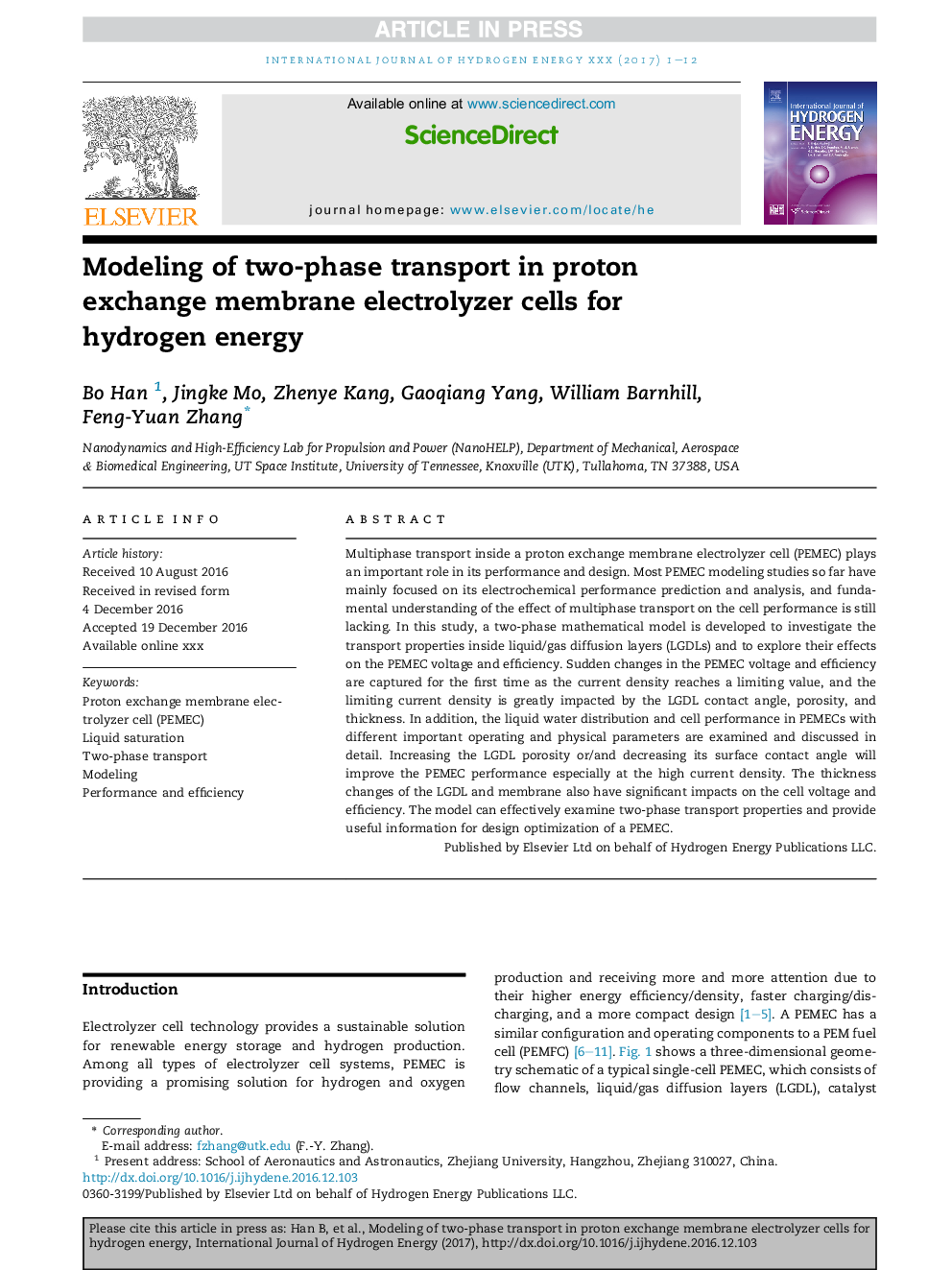| Article ID | Journal | Published Year | Pages | File Type |
|---|---|---|---|---|
| 5146363 | International Journal of Hydrogen Energy | 2017 | 12 Pages |
Abstract
Multiphase transport inside a proton exchange membrane electrolyzer cell (PEMEC) plays an important role in its performance and design. Most PEMEC modeling studies so far have mainly focused on its electrochemical performance prediction and analysis, and fundamental understanding of the effect of multiphase transport on the cell performance is still lacking. In this study, a two-phase mathematical model is developed to investigate the transport properties inside liquid/gas diffusion layers (LGDLs) and to explore their effects on the PEMEC voltage and efficiency. Sudden changes in the PEMEC voltage and efficiency are captured for the first time as the current density reaches a limiting value, and the limiting current density is greatly impacted by the LGDL contact angle, porosity, and thickness. In addition, the liquid water distribution and cell performance in PEMECs with different important operating and physical parameters are examined and discussed in detail. Increasing the LGDL porosity or/and decreasing its surface contact angle will improve the PEMEC performance especially at the high current density. The thickness changes of the LGDL and membrane also have significant impacts on the cell voltage and efficiency. The model can effectively examine two-phase transport properties and provide useful information for design optimization of a PEMEC.
Related Topics
Physical Sciences and Engineering
Chemistry
Electrochemistry
Authors
Bo Han, Jingke Mo, Zhenye Kang, Gaoqiang Yang, William Barnhill, Feng-Yuan Zhang,
